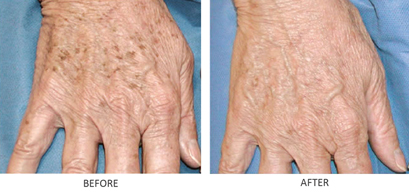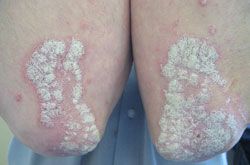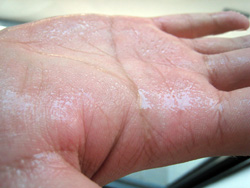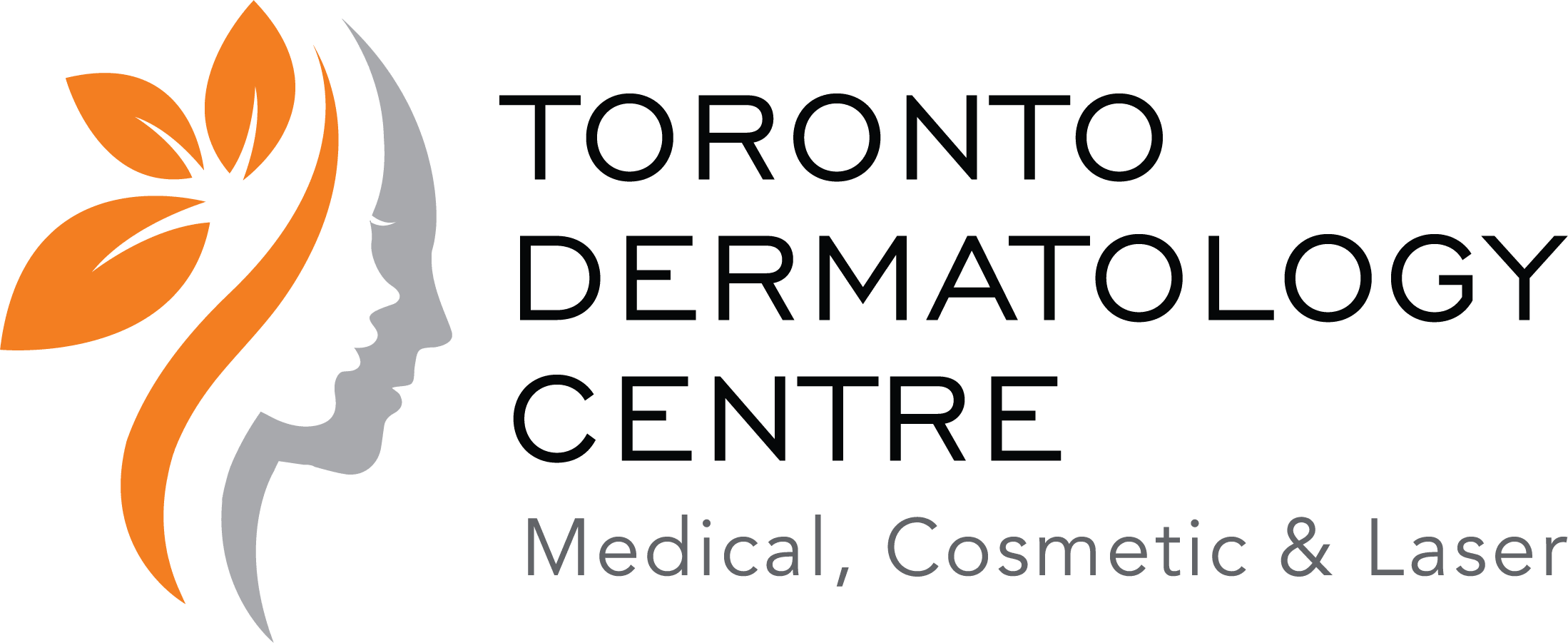Did you know that our very own Dr. Benjamin Barankin was recently chosen to present the best clinical tips in dermatology to the 23rd World Congress of Dermatology, to be held in Vancouver, BC in June of 2015? More than 10,000 dermatologists from around the world will hear our expert dermatologist speak about the best ways to treat and best ways to diagnose various skin conditions, as well as best ways to manage challenging cases and situations, and best practice management tips.
Category: Our Blog
If the eyes are the windows to the soul, then are the hands the windows to…. your true age? It is often said that to figure out a woman’s true age one must look past the well-dressed face to the naked reality of the hands. Why is that? Well, for those of us who put the effort in, we use good products on our face, get treatments to keep our faces youthful, wear sunscreen and especially wear make up to hide whatever it is we feel the need to cover up. It is often a negligent act where the hands are concerned.
From a lack of sunscreen applied daily to constantly washing our hands and not moisturizing them enough, the hands tend to age more quickly than the rest of us. Our hands will start to feel the onset of aging with brown sunspots, also known as age spots, visible volume loss, vessels protruding and crepey or dry skin. While we know that most of the rules that we apply to our face can also be applied to our hands, we often just forget to do it. So, if we want to fool them with youthful, gorgeous hands, what do we do?
Let’s start with the basics. Every day when applying sunscreen to your face, don’t forget the hands as well, they are exposed to the sun almost as often as the face. If brown spots are already visible, there are a few options. If they are raised, then it may be a visit to the dermatologist to have liquid nitrogen applied to the spots. They may raise, may even blister a little and eventually flake off. If the spots are flat, then a trip to the medical esthetician is in order. Using BBL (broadband light) which is like a laser, we can remove the brown spots by heating up the pigment, causing it to lift, flake off, and leave a more neutral colour on the skin. Chemical peels will also help to achieve the same goal. It may take a few more treatments, but chemical peels will also help with the crepey skin, leaving the hands more hydrated looking.

When the hands start to lose volume, the easiest way, and the fastest way to achieve a fuller look is to add filler. Fillers (e.g. Juvederm, Restylane) usually are made of hyaluronic acid, a molecule that holds a thousand times its weight in water. The dermatologist will add the volume appropriately to each hand and within minutes the desired effects will be visible. The hands will lose that ropey, veiny look and appear more youthful instantly.
Utilizing good home care is beneficial as much for the hands as it is for the face. There are definitely not as many products to choose from when it comes to the proper grooming of the hands, but some medical grade products do actually help to achieve an anti-aging look. ZO Health carries two products that work especially well. One is applied nightly and contains retinol, an ingredients known as the gold standard in anti-aging topicals. The second product acts as an exfoliant and can be applied 1-2 times per week, like a treatment. These products in combination with a good moisturizer and great sunscreen will help to reverse aging skin or prevent the skin from aging as quickly in the first place.
Anti-aging is not reserved for the face. The neck, décolleté, and the hands carry as much weight in the deciding factor to determine age as our faces. Be sure to carry over your skin care from your face to all areas regularly exposed, and you will be fooling them for years to come!
~ Sheri Roselle, Medical Esthetician at Toronto Dermatology Centre

Dr. Benjamin Barankin is on the medical committee of the Acne and Rosacea Society of Canada, which just launched “Rosacea Help”. The content of the website is up to date and written by some of the best dermatologists in Canada. This new rosacea website is geared for a Canadian audience and has information about the causes of rosacea, types of rosacea, signs of rosacea, impact of rosacea, triggers that flare rosacea (environmental and lifestyle), treatments, up to date news and research, as well as events related to rosacea in the community. There is also information on when to see a doctor. This website contains some of the best rosacea information you can find on the web.
Our very own dermatologist Dr. Benjamin Barankin was quoted amongst the best dermatologists in Canada discussing new developments in psoriasis in the Oct/Nov 2014 issue of The Chronicle of Skin & Allergy. As both a busy clinician and researcher in psoriasis, Dr. Barankin’s expertise is often quoted by the media. The article highlights the existing therapies, as well as new therapies in psoriasis including generic or biosimilar biologics, anti-IL17 agents such as secukinumab, brodalumab, and ixekizumab. Scalp psoriasis and co-morbidities of psoriasis (e.g. arthritis, metabolic syndrome, diabetes, high blood pressure) are also discussed. The article also mentions the new national Canadian psoriasis guidelines of which Dr. Barankin was selected to be a part of and which will be released in 2015.

Dr. Anatoli Freiman & Dr. Benjamin Barankin are board-certified dermatologists in Toronto. They are Fellows of the Royal College of Physicians & Surgeons of Canada and of the American Academy of Dermatology & Dermatologic Surgery. Respected authorities in the field, they are lecturers at medical conferences, media spokespersons, and authors of 7 dermatology books & over 600 publications in dermatology. Both Dr. Barankin and Dr. Freiman also regularly educate other doctors, residents, and medical students in the art & science of dermatology.
Along with providing medical (OHIP-covered) dermatology care such as the assessment and treatment of acne, rosacea, psoriasis, eczema, hyperhidrosis, moles, skin tags, lesions (e.g. pearly penile papules, dermatofibromas, syringomas), pigmentary problems (e.g. melasma), skin infections (e.g. warts, molluscum, herpes cold sores, shingles, athlete’s foot, nail fungus), and skin cancers (e.g. melanoma, basal cell skin cancer, squamous cell cancer), our Toronto dermatologists, Dr. Anatoli Freiman & Dr. Benjamin Barankin are skin care professionals providing anti-aging treatments such as BOTOX, fillers (Juvederm, Restylane, Perlane, Radiesse), and more.
Dr. Anatoli Freiman teaches dermatology at the University of Toronto and is a consultant dermatologist on staff at Women’s College Hospital & York Central Hospital. Dr. Benjamin Barankin served on the executive of the Canadian Dermatology Association (CDA) and is a medical educator through numerous publications in North American & International family medicine & dermatology journals. He is also team Dermatologist for the Toronto FC soccer team. He was recognized nationally in 2014 with the prestigious CDA’s Young Dermatologists’ Volunteer Award, and has been awarded several times by RealSelf with the top dermatologist award for his cosmetic work.
A leader in the field, Dr. Anatoli Freiman is a sought-after media spokesperson, a frequent lecturer at national and international medical conferences, and is an author of numerous publications, presentations, book and book chapters in dermatology. Dr. Anatoli Freiman regularly educates dermatologists, family physicians, medical trainees, and the public on matters related to the skin, hair and nails.
Both doctors travel extensively to scientific meetings to stay at the cutting edge of dermatology research and technologies. In addition, their expertise is frequently sought by the Canadian press including: National Post, Globe & Mail, Toronto Star, Reader’s Digest, ELLE, FLARE, Sharp, Elevate, Canadian Living, Best Health, Glow, Today’s Parent, Good Times, CBC radio, Global & CTV news.
Both doctors also regularly perform medical-legal and medical-insurance assessments and are used by lawyers as experts on all things skin-related.
Wow, I kinda feel like I am bragging, but working at Toronto Dermatology Centre is a dream come true for any medical esthetician who wants to work with the best. I have learned more in the past three years than I have in the past thirty! For those of us with a penchant for learning and constantly bettering ourselves, this is the place to be. For those of you in need of anything skin, hair, or nail related, be confident that Toronto Dermatology Centre is the best choice every time.
~ Sheri Roselle, Medical Esthetician at Toronto Dermatology Centre
Dr. Freiman discusses the issue of antibiotic resistance in acne therapy in The Chronicle of Skin and Allergy. The use of antibiotic treatments to manage acne is contributing to the global dilemma of antibiotic resistance, so therapeutic strategies need to address this development, according to Dr. Anatoli Freiman, the medical director of the Toronto Dermatology Centre. “Antibiotic resistance is an international concern,” said Dr. Freiman, speaking in Toronto at Primary Care Today 2014 regarding the threat of antibiotic resistance linked to acne treatment. He pointed to recent news about a World Health Organization report, which warned of the threat of antibiotic resistant bacteria. Acne is a chronic condition that can require maintenance therapy, said Dr. Freiman, noting that there is evidence suggesting it can persist into adult years in about half of affected individuals. Choices of topical anti-acne treatments include topical retinoids, topical antibiotics, and benzoyl peroxide, with one of the objectives of treatment being the suppression of Propionibacterium acnes (P. acnes), according to Dr. Freiman. Treatment should also target inflammation and abnormal desquamation, he added. Antibiotics, both oral and topical, have been mainstays of acne management for more than half a century, but clinicians are being encouraged to prescribe antibiotics sparingly because of the threat of antimicrobial resistance, explained Dr. Freiman.
The last 30 years has seen a disturbing rise in resistance to antibiotics that have been commonly prescribed to treat acne. That figure was 20% in 1978 rising to 73% in 1995. Investigators have found that resistance to some antibiotics is greater than with others: erythromycin and clindamycin resistance is more prevalent than resistance to tetracycline, for example. In as short a period as two months, strains resistant to P. acnes have been observed to emerge after just eight weeks of topical antibiotic monotherapy. Using benzoyl peroxide can be an effective strategy to address antibiotic-resistant P. acnes. In one study, the use of benzoyl peroxide cleanser 6% resulted in a decrease of total P. acnes count and decrease in counts of strains resistant to antibiotics such erythromycin, tetracyclines, and clindamycin. “Benzoyl peroxide does not trigger resistance,” said Dr. Freiman. “It’s anti-inflammatory, and it’s great to use to treat acne.” P. acnes is not regarded as a pathogen in most human diseases, so perhaps it may not be apparent that antibiotic resistance in acne could be part of any larger health concern. Topical and oral antibiotics that are options for acne therapy, however, can result in resistant strains of coagulase-negative staphylococcus, which can then transfer resistance to Staphylococcus aureus. Indeed, an increase in resistant S. aureus has been identified in acne patients treated with antibiotics.
Moreover, a three-fold rise in the prevalence of Group A streptococci in the oropharynx of acne patients treated with antibiotic therapy has been observed. Dr. Freiman noted that the growing problem of antibiotic resistance has been coupled with decreased clinical responses. A systematic review of 50 clinical trials found declining efficacy of topical erythromycin administered in patients with acne. Extended use of antibiotics offers the opportunity for horizontal gene transfer, according to Dr. Freiman. “There is a concern about horizontal gene transfer,” he said, explaining horizontal gene transfer occurs between organisms such that resistance can be passed to unrelated bacteria. Strategies to limit resistance of P. acnes include shortening the course of antibiotic therapy and avoiding inappropriate use of antibiotics, said Dr. Freiman. First-line therapy should combine a topical retinoid with an antimicrobial agent, either oral or topical, said Dr. Freiman. When an antibiotic is prescribed, an agent containing benzoyl peroxide should be prescribed in combination or a benzoyl peroxide product can be used as a wash. Maintenance therapy can consist of topical retinoids, with benzoyl peroxide added as needed.
Our very own Dr. Barankin recently co-authored an article on palmar hyperhidrosis (excessive sweating) in the Journal of Neonatology and Clinical Pediatrics. In this scientific article, Dr. Barankin reviews the root causes of this condition, the incidence of it, how to diagnose it, how it manifests, the prognosis, and the best treatment options for hyperhidrosis. Click here to view the article.

 Our dermatologist Dr. Benjamin Barankin recently was quoted in the holiday issue of INBETWEEN magazine discussing how to get the best glow this season, in particular reviewing microdermabrasion, chemical peels, dermarolling, and laser resurfacing. As an expert in anti-aging treatments, Dr. Barankin is frequently quoted by the Canadian and international press discussing the best treatments for both medical and cosmetic issues. Check out the article here.
Our dermatologist Dr. Benjamin Barankin recently was quoted in the holiday issue of INBETWEEN magazine discussing how to get the best glow this season, in particular reviewing microdermabrasion, chemical peels, dermarolling, and laser resurfacing. As an expert in anti-aging treatments, Dr. Barankin is frequently quoted by the Canadian and international press discussing the best treatments for both medical and cosmetic issues. Check out the article here.

